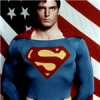The bulls continued to decline, falling to 48.9%, from the prior 51.6%. That is the lowest reading since 46.4%, shown at the market bottom last October last year. The bears rose to 27.7%, from 25.3%, and their highest level they were above 29% during that same October period. Action is approaching that shown late April 2005, another favorable period, when bulls were 44.0% and bears were 29.7%.
Those calling for a correction moved up to 23.4%, from 23.1% last week. This group is short term bearish, but view pullbacks as buying opportunities, and long term expect the market to go up. A complete table of the Advisory Sentiment appears on the final hotline page.
The current sentiment shows a large shift from the start of the year, which saw bulls around 60% and bears about 20%. High bullish levels often prove negative for the market, because a rally is required for extreme optimism, and generally most investors are then fully committed. The start of a new year is an exception, as new funds are available and that postpones any decline. High levels of bearishness are positive and only occur after a major market decline. That has not been shown during the range bound market over the last few years, and during this period buying opportunities have been triggered with bulls around 45% and bears 30%. The spread between these two groups has provided effective shorter term signals for a potential change in market direction, with a wide difference around 40% negative, and small spread near 15% positive.
The difference between the bulls and bears narrowed to just 21.2%. That continues to move in the right direction, away from the bearish 39.6% spread seven weeks ago. Contrast that with the positive difference of 15.8% shown at the October 2005 lows. The spread was over 40% at the end of December 2004, but the 29-April-05 reading at 13.1% was another signal to buy. Around the August 2004 market bottom, when the DJIA was below 9,850 and the S&P 500 below 1,100, the spread was as little as 9.4%.

Absolute perfection
Started by
da_cheif
, Feb 15 2006 08:39 PM
No replies to this topic











